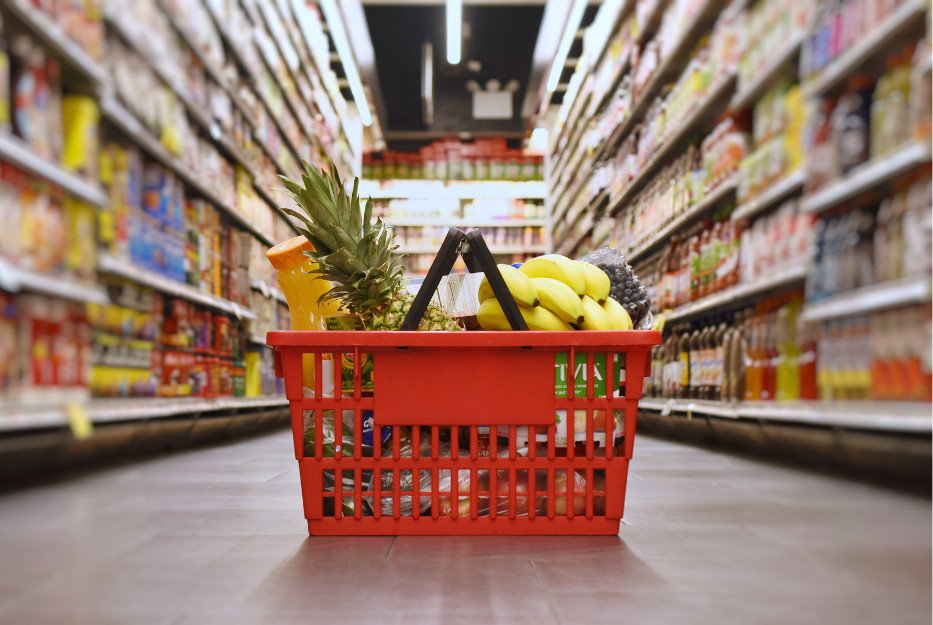How to Shop for Groceries and Essentials in Canada (step-by-step guide)

**Please review the disclaimer at the end of this document before reading or using this guide.
As a new immigrant in Canada, getting familiar with the grocery shopping experience is a crucial part of settling into your new environment. Knowing where to shop, what to expect, and how to make the most of your budget will help you navigate Canadian stores with confidence. This guide provides information on how to shop for groceries and essentials in Canada.
Step 1: Understand the Types of Grocery Stores in Canada
- Supermarkets:
- Large stores offering a wide range of products, including fresh produce, meat, dairy, bakery items, and household essentials.
- Examples: Loblaws, Sobeys, Metro, and Save-On-Foods.
- Discount Grocery Stores:
- Offer lower prices on groceries and essentials, often with fewer brand options and a focus on no-frills packaging.
- Examples: No Frills, Walmart, Food Basics, and Giant Tiger.
- Ethnic Grocery Stores:
- Specialize in products from specific countries or regions, offering a wide variety of spices, produce, and specialty items that may not be available in mainstream supermarkets.
- Examples: T&T Supermarket (Asian), Al Premium (Middle Eastern and Asian), and Punjab Food Center (South Asian).
- Local Markets and Farmers’ Markets:
- Provide fresh, locally-grown produce, meats, and artisanal products. They often operate seasonally and are a great way to support local farmers and vendors.
- Examples: St. Lawrence Market (Toronto), Granville Island Public Market (Vancouver), and Jean-Talon Market (Montreal).
- Convenience Stores:
- Smaller stores offering basic groceries, snacks, and household items, usually at slightly higher prices. They are convenient for quick purchases.
- Examples: 7-Eleven, Circle K.
- Online Grocery Shopping:
- Many grocery stores offer online shopping with home delivery or in-store pickup options, which can be convenient for busy schedules.
- Examples: Instacart, Amazon Fresh, Walmart Grocery.
Step 2: Learn How to Navigate Canadian Grocery Stores
- Store Layout:
- Most Canadian grocery stores follow a similar layout, with fresh produce at the entrance, followed by dairy, meat, and frozen food sections. Packaged goods, snacks, and household items are usually found in the central aisles.
- Shopping Carts and Baskets:
- Use a shopping cart for larger grocery runs or a basket for smaller purchases. In some stores, you may need a coin (usually $1 or $2) to unlock a shopping cart.
- Product Labels and Prices:
- Pay attention to product labels for nutritional information, expiry dates, and country of origin. Prices are usually listed per unit or per kilogram, so compare prices to find the best deals.
- Checkout Process:
- At the checkout, you can choose between cashier-assisted lanes or self-checkout stations. Be prepared to bag your groceries; some stores charge for plastic bags, so consider bringing reusable ones.
Step 3: Plan Your Grocery Shopping
- Create a Shopping List:
- Make a list of the items you need to avoid impulse buying and to stay within your budget.
- Check Flyers and Coupons:
- Look for weekly flyers, coupons, and online deals to save money on groceries. Many stores have apps that offer digital coupons and discounts.
- Examples: Flipp, Reebee, and store-specific apps.
- Meal Planning:
- Plan your meals for the week to ensure you buy only what you need and avoid food waste.
- Loyalty Programs:
- Sign up for loyalty programs offered by many grocery stores to earn points on your purchases, which can be redeemed for discounts or rewards.
- Examples: PC Optimum (Loblaws, No Frills), Air Miles (Sobeys, Metro).
Step 4: Understand Payment Options
- Cash and Cards:
- Most grocery stores accept cash, debit cards, and credit cards. Contactless payments (tap) are widely accepted.
- Gift Cards:
- Some stores offer their own gift cards or accept third-party gift cards as payment.
- Mobile Payments:
- Many stores accept mobile payment options like Apple Pay, Google Pay, and Samsung Pay.
- Price Matching:
- Some stores offer price matching, where they will match a lower advertised price from a competitor. Check with customer service for their policy.
Step 5: Shop for Essentials Beyond Groceries
- Household Essentials:
- Stores like Walmart, Canadian Tire, and Dollarama offer a wide range of household items, cleaning supplies, and personal care products.
- Pharmacies:
- Pharmacies like Shoppers Drug Mart, Rexall, and Jean Coutu sell over-the-counter medications, health products, and personal care items.
- Bulk Buying:
- Consider shopping at bulk stores like Costco for large quantities of items at discounted prices. Membership is usually required.
Step 6: Explore Budget-Friendly Shopping Tips
- Buy in Bulk:
- Purchase non-perishable items like rice, pasta, and canned goods in bulk to save money in the long run.
- Seasonal Shopping:
- Buy fruits and vegetables that are in season, as they are usually fresher and cheaper.
- Store Brands:
- Consider buying store-brand products, which are often cheaper and of comparable quality to name-brand items.
- Reduce Food Waste:
- Store food properly and use leftovers creatively to minimize waste and save money.
Additional Tips for New Immigrants
- Get to Know Canadian Brands:
- Familiarize yourself with popular Canadian food brands, as they may offer quality and value that you’re not yet aware of.
- Ask for Help:
- If you’re unsure about where to find specific items, don’t hesitate to ask store employees for assistance.
- Explore Different Stores:
- Visit different grocery stores to compare prices, products, and services. This will help you find the best places to shop based on your needs and budget.
- Stay Informed:
- Subscribe to newsletters or follow your favorite grocery stores on social media to stay updated on sales, new products, and special promotions.
Shopping for groceries and essentials in Canada may seem overwhelming at first, but with the right information and strategies, you can navigate the process with ease. By understanding the different types of stores, planning your shopping trips, using available discounts, and exploring budget-friendly options, new immigrants can effectively manage their grocery shopping and feel more at home in Canada. Welcome to Canada, and enjoy the diverse and abundant shopping options available to you!
**DISCLAIMER: This document was prepared based on information gathered from various online sources. While our aim is to provide accurate and helpful information to newcomers in Canada, Active Action cannot be held responsible for any actions, outcomes, or situations that may arise from the use of this document. We strongly recommend that you verify any details with official sources or relevant authorities if you have any doubts or uncertainties about any information provided in this document. If you have any specific questions about the information in this document, or if you notice any inaccuracies or missing information, please inform us immediately through the contact form. We will respond to you as soon as possible and/or update the information as necessary.


